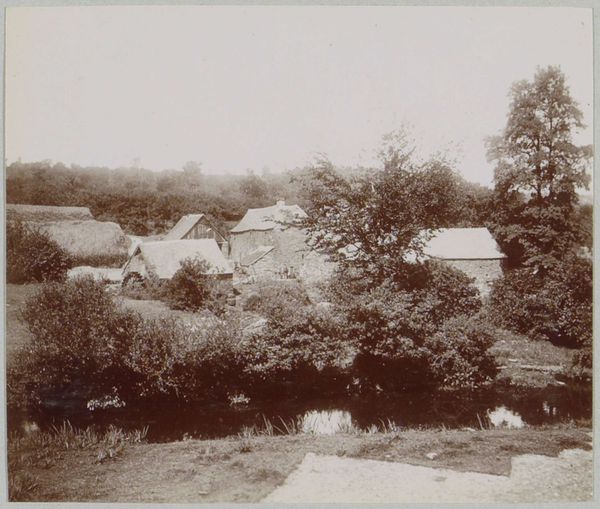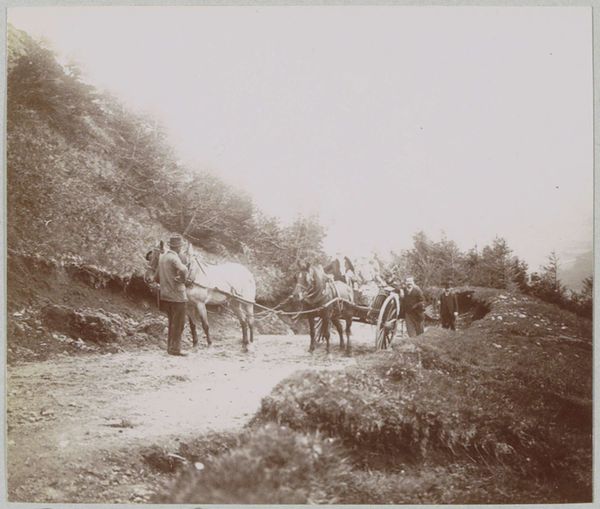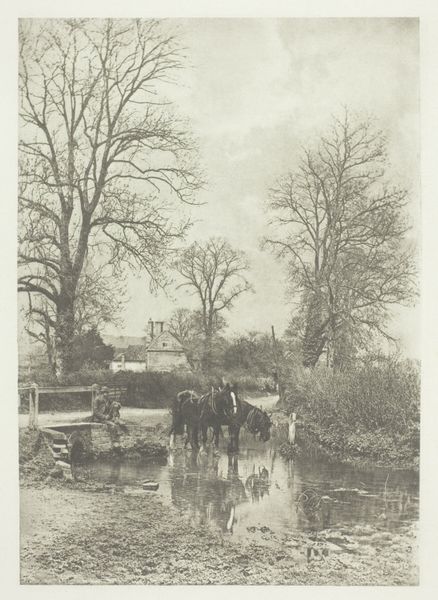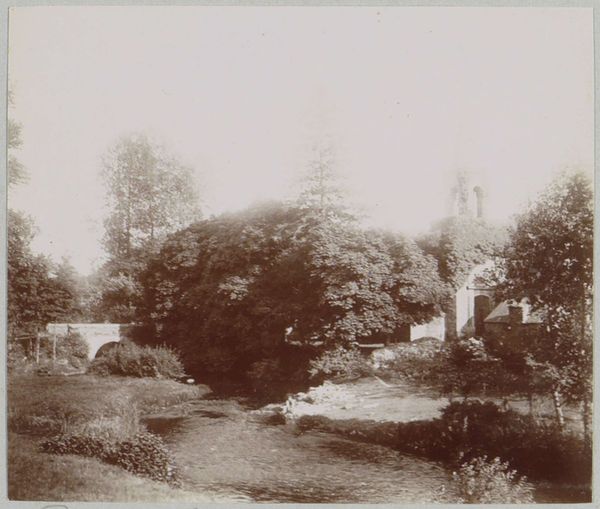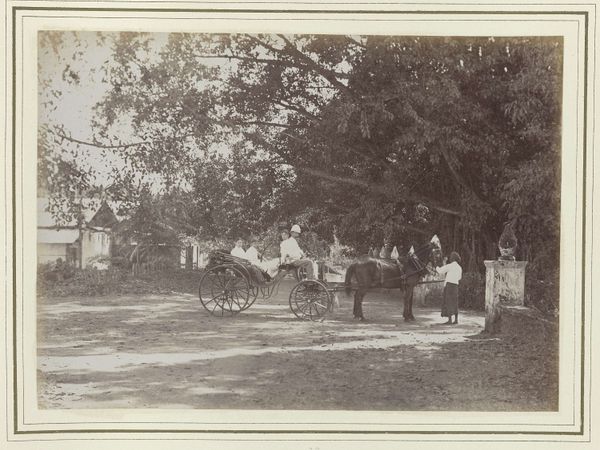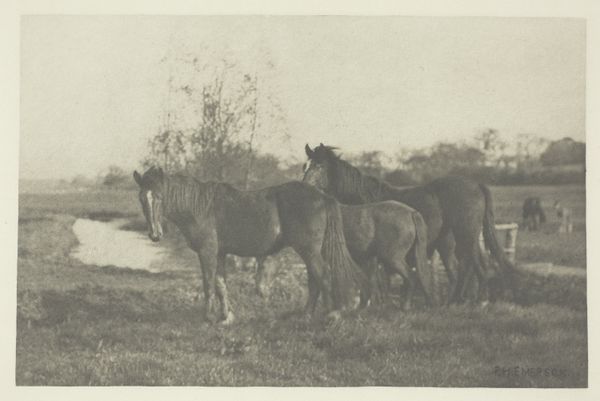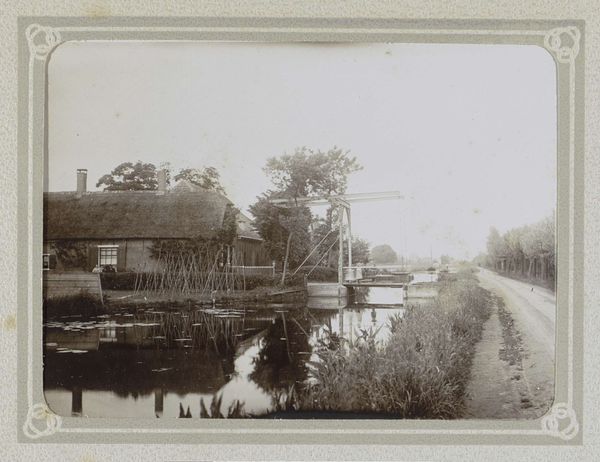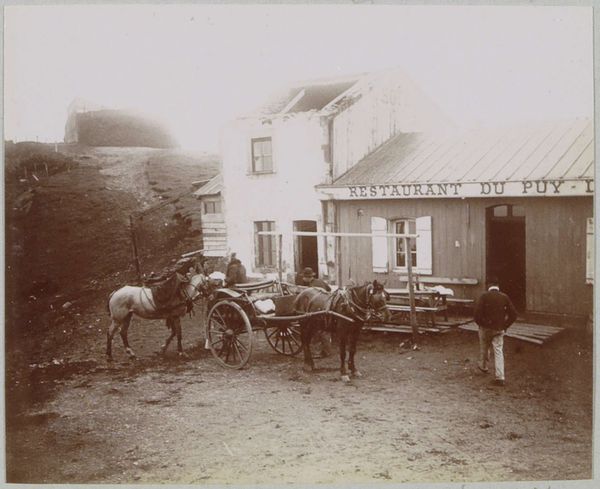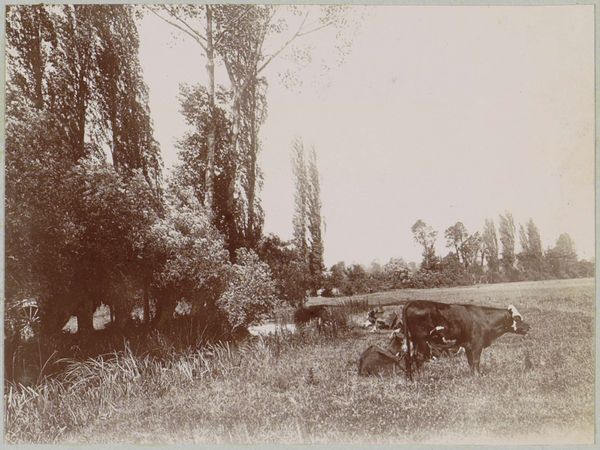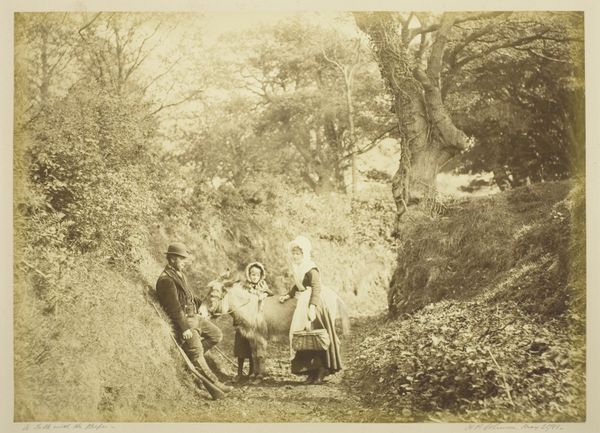
photography
#
pictorialism
#
landscape
#
photography
#
realism
Dimensions: height 70 mm, width 83 mm
Copyright: Rijks Museum: Open Domain
Curator: This photograph presents a landscape scene with dwellings amidst dramatic rock formations, taken in 1901. It's titled "Huizen bij rotsformaties in Huelgoat" – "Houses by Rock Formations in Huelgoat." Editor: It feels timeless, almost mythical. The sepia tones give it a feeling of faded memory. Are we looking at an illustration or a vintage print? The rocks dominate, with just glimpses of structures peeking through. Curator: It is a photograph employing the Pictorialist style, aiming for an artistic effect achieved through darkroom manipulation. Pictorialism used techniques like soft focus to elevate photography to the level of painting. Notice how the soft light washes over the composition. It blurs the distinction between reality and imagination. Editor: Indeed. The houses are reduced to simple geometric shapes, almost blending into the geological backdrop. Is this a comment on humanity's relationship with nature? Does one belong to the other? How might society consider how buildings are being designed into such landscape? Curator: It might reflect the symbolic power of natural settings within the cultural memory of a place. For instance, boulders have frequently been read as archetypes of resilience and the lasting presence of something old. A house tucked beneath rocks perhaps symbolized a specific, humble relationship to nature's power, a seeking of protection rather than confrontation. Editor: The choice to obscure sharp detail encourages the viewer to contemplate a deeper sense of place. It suggests a society intimately bound to its physical environment, almost enveloped. There's something melancholic in this fusion; as though the modern world has encroached but not yet fully consumed this way of living. What happens with our need to shelter under something grand like a mountain or beneath boulders in the distant future? Curator: Exactly, these rock formations were important locations and shelters, and likely became symbolic. To further that connection, Pictorialism helped to cement Photography’s ability to act as a time capsule, or cultural memory. What looks to be an objective image now contains powerful metaphors. Editor: It shows how an artist could use early photographic processes not just to record but also interpret and even mythologize. I find myself reflecting on the way landscapes shape our understanding of identity. Curator: And I how enduring motifs transform over centuries of collective symbolic experience. Editor: A lasting reminder, for me, that every visual, irrespective of media, is first and foremost, a symbolic statement.
Comments
No comments
Be the first to comment and join the conversation on the ultimate creative platform.

